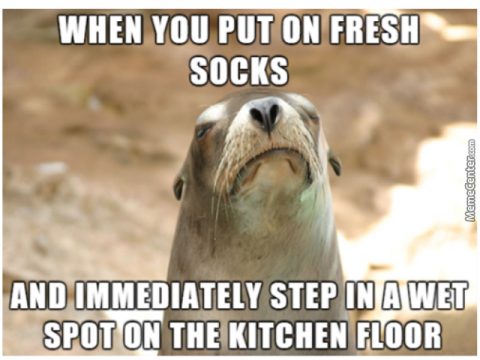Keep Warm while Skiing!
How to Keep Warm while Skiing!
The Big Chill
Rumour has it this winter will be one of the coldest in the last few years.
Time will tell if it’s going to break records or not. Either way, once you change from your home town to the mountain resorts, the temperature will (normally) change, and not positively!
On the slopes and lifts, especially in resorts with high altitude ski areas, temperatures can drop significantly so having a few tricks up your sleeve can mean you enjoy the holiday a little more:
1- Dress Accordingly
To the environment and the historical age!
Fair play, if you want to walk around the apres-ski bars in fancy dress, but that might not be the best outfit to spend your day in! Same goes for old fashioned jumpers or Lederhosen…
Use a layering system on the mountain so you can adjust during the day if the temperature rises or drops.
Breathable layers are a must, firstly, in order to let the skin breathe and secondly to wick away water from between clothes and from your skin.
2- Keep an Eye on Ski Boots
If they are too tight, they will block your blood circulation and quickly turn your feet numb.
Make sure the shell size is correct and that the foot beds are appropriate. Once that is covered, open a few buckles whilst on the lift helps the blood flow and slows down the freeze setting in.
3- Shut out the Breeze
Make sure the trousers fit well over the boots, along with the plastic band that all ski trousers have nowadays.
Same goes for the jacket sleeves and neck.
Avoid looking like the guys in “Frozen”, dying of hypothermia and looking good by keeping the jackets open, the sleeves not over the gloves, scarfs hanging, hoods down etc…

4- Drink the Right Stuff
Nope. Booze is not on the list.
While it’s been used by mountain people since the beginning of time to help in some extreme situations (frostbite), it’s actually pretty unhelpful when trying to stay warm.
Alcool is a vasodilator (opens up the blood vessels) and that is why after the shot of grappa you feel warmer. BUT, more blood at the surface also mean more exposure to the cold temperatures, and the longer term effect is the cooling down of the blood itself…
4b- Drink Warm in Warmth
Make sure that if you stop for a drink to recover the body heat, you do so with a warm drink and in a warm place! This way your system can recover fully and not just partly..
5- Eat. Well…
Cold weather induces us to eat more but, it’s not necessary to eat loads in order to keep warm.
Water is the first element that helps regulate body temperature. Make sure you have plenty of that and that your meals on the mountain are easily digestible.
6- The Warmest Place
Old habit used by plenty of ski instructors and mountain people: every time you stop, make sure you are in the warmest place.
On the slopes make sure you stop in a downwind/sunny spot (and on the side of the run, not in the middle of it, naturally).
At the restaurant, pick a table inside rather than outside (yes, also on sunny days).

7- Lifts are not all the same
Lapping a bubble is better than a chair.
A covered chair is better than an open one.
Queues in the sun are better than queues in the shadow.
A long seat in the wind and shadow… is a pain in the bum.
Add all this up and it makes the difference between a day of pain and a day of pleasure.
Resort knowledge helps quite a bit 😉
8- Look at the mountains, check the altitude
South facing aspects are warmer than northern ones, with a few degrees difference depending on the wind.
Also, every 100 meters you gain in height, you lose an average of 0.6 degrees (in stable weather conditions). Take a look at the mountains when you are about to decide where to start your day and take a look at the maps to figure out the highest altitude points you are heading for.
9- Dry your Clothes
Last on the list but first rule of long outdoor adventures: keep your clothes dry and change them if you can’t save them.
For the keen beans that want to stay out as much as possible, the best plan is to have clean and dry extras with you.
Socks and basic layer are the essential ones.
Change them if they get too wet, doing so obviously, in a warm and dry place!
The Subzero Coaching Team
More articles from our skiing blog:
Ski News
TO find out more about ski course you can find the link here!